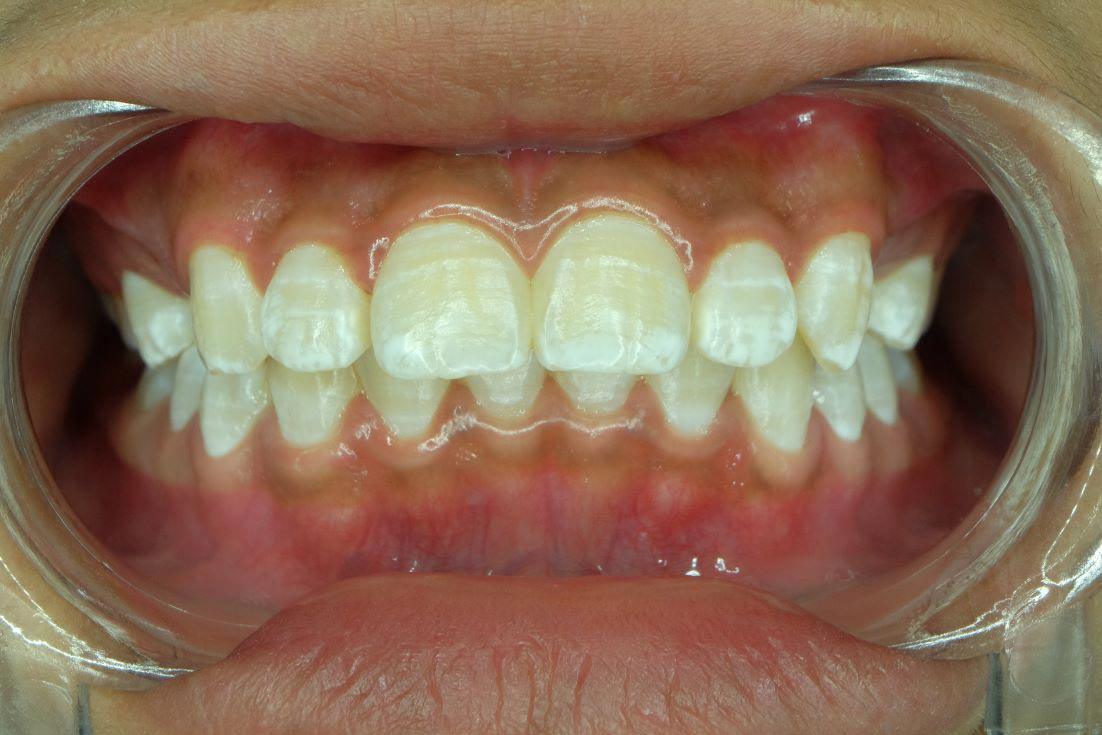Why Do I Have White Spots on My Teeth?

Everyone wants white teeth, but not so much when that color appears in spots or blotches. Technically known as white lesions, white spots can develop on your teeth due a range of factors from diet to ingesting fluoride as a child.
Common causes include:
- Fluorosis – Though fluoride is essential for strengthening teeth and preventing decay, too much fluoride in developing teeth can lead to low amounts calcification, which causes spots of softer enamel and discoloration. Fluorosis occurs when children consume too many fluoridated beverages or swallow fluoride toothpaste when the enamel layers of permanent teeth are being formed. Most commonly, this happens before the age of 8 when permanent teeth come in, or around the ages of 1-2 when baby teeth appear. Fluoride is safe but should only be consumed in proper amounts. That’s why it’s important for parents to monitor their children’s brushing habits during the stages of tooth formation, to ensure they aren’t accidentally ingesting large amounts of toothpaste or mouthwash.
- Enamel Hypoplasia – This condition is an enamel defect that results in thin or missing enamel. Enamel hypoplasia is generally caused by a nutritional deficiency that leads to mineral loss in the tooth. Taking certain antibiotics, or conditions such as celiac disease, can make it difficult to absorb nutrients resulting in enamel defects. Additionally, smoking while pregnant may cause this condition in children. In some cases, enamel hypoplasia occurs on only part of a tooth’s surface, resulting in white spots, or pits and grooves in the tooth’s enamel. In other cases, an entire tooth may have an overly thin layer of dental enamel or no enamel at all.
- Diet – A diet high in sugar or acidic foods can also cause white spots on your teeth. Highly acidic foods and drinks, such as soda and citrus fruits eat away at your tooth enamel. A diet high in sugar also causes the formation of acidic plaque, which can erode enamel. Acid reflux is another trigger because it produces acid in the stomach, throat, and mouth. As tooth enamel breaks down, patients may also experience other symptoms like sensitivity to cold or hot foods and beverages.
- Plaque Accumulation – White lesions can also form due to an accumulation of bacteria plaque. Frequently the result of poor dental hygiene, plaque accumulation can also be a side effect of wearing braces. Lack of effective oral hygiene or an inability to thoroughly remove plaque between brackets cause demineralization of the tooth, which results in white areas of decalcification These white spots are early cavities but can generally be reversed if treated quickly.
Treatment for White Spots On Teeth
While some patients don’t mind the aesthetics of white spots on their teeth, others are extremely bothered by it. Fortunately, for those concerned there are a number of treatment options to eliminate the spots, including:
- Enamel Microabrasion – This procedure removes a thin layer of enamel from the tooth’s surface using mild abrasion. This can remove white spots and improve the appearance of teeth.
- Bleaching – Performed under a doctor’s supervision, bleaching helps balance the color of your tooth’s enamel. This treatment lightens the entire tooth, so that it matches the color of the white spots. However, since this treatment can further bleach white spots, resulting in the spots taking on a different shade of white, it’s not an effective treatment for people with fluorosis.
Veneers – Depending on the extent of the white spots, your dentist may suggest concealing them with a porcelain veneer. This involves the creation of a custom porcelain that is permanently bonded to the surface of your teeth, effectively covering any discoloration.
Contact Our Dental Team
Whatever the cause of the white spots on your teeth or on your child’s teeth, you have several options for treatment. Please call our team to discuss the best options.


